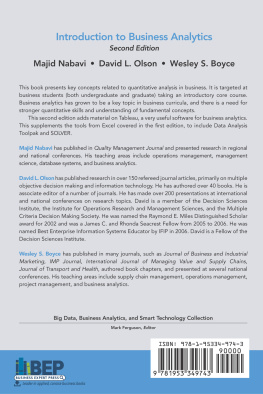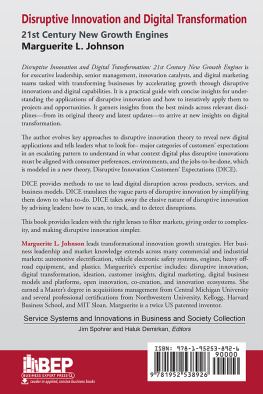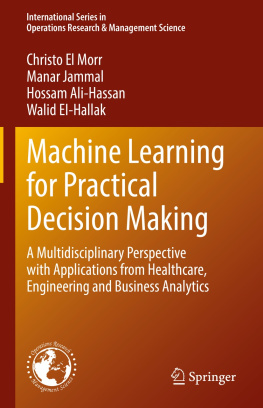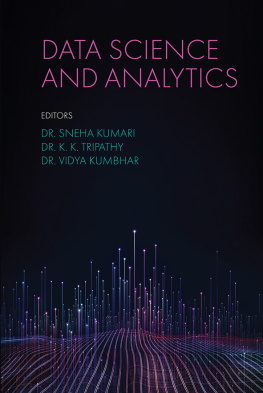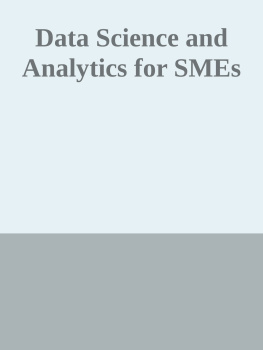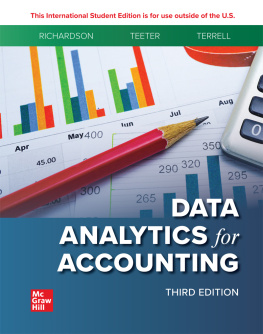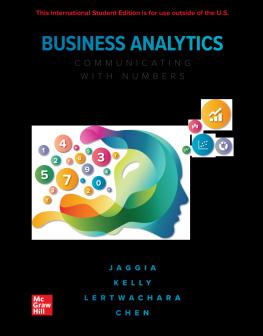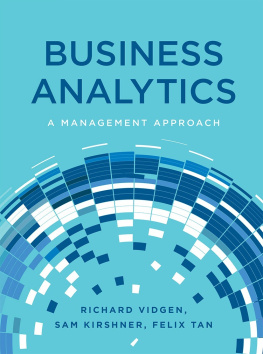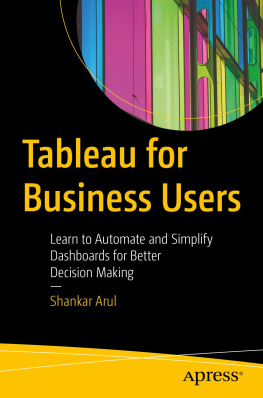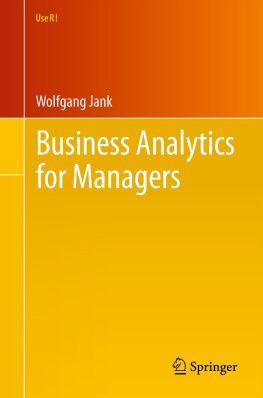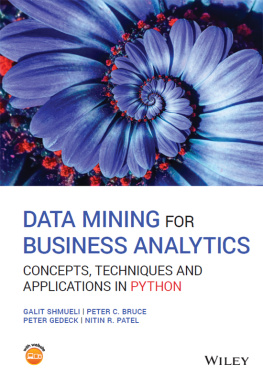Introduction to Business Analytics
Introduction to Business Analytics
Second Edition
Majid Nabavi
David L. Olson
Wesley S. Boyce

Introduction to Business Analytics, Second Edition
Copyright Business Expert Press, LLC, 2021.
All rights reserved. No part of this publication may be reproduced, stored in a retrieval system, or transmitted in any form or by any meanselectronic, mechanical, photocopy, recording, or any other except for brief quotations, not to exceed 400 words, without the prior permission of the publisher.
First published in 2019 by
Business Expert Press, LLC
222 East 46th Street, New York, NY 10017
www.businessexpertpress.com
ISBN-13: 978-1-95334-974-3 (paperback)
ISBN-13: 978-1-95334-975-0 (e-book)
Business Expert Press Big Data, Business Analytics, and Smart Technology Collection
Collection ISSN: 2333-6749 (print)
Collection ISSN: 2333-6757 (electronic)
Cover design by Charlene Kronstedt and interior design by S4carlisle Publishing Services Private Ltd., Chennai, India
First edition: 2019
10 9 8 7 6 5 4 3 2 1
Printed in the United States of America.
Description
This book is intended to present key concepts related to quantitative analysis in business. It is targeted to business students (both undergraduate and graduate) taking an introductory core course. Business analytics has grown to be a key topic in business curricula, and there is a need for stronger quantitative skills and understanding of fundamental concepts. This second edition adds material on Tableau, a very useful software for business analytics. This supplements the tools from Excel covered in the first edition, to include Data Analysis Toolpak and SOLVER.
Keywords
business analytics; forecasting; hypothesis testing; knowledge management; regression; statistical sampling
Contents
Business analytics refers to the use of quantitative analysis to support managerial decision making. It is concerned with the process of managerial decision making, as well as the tools used to support it (management science). Information is a valuable asset requiring careful management, to make sure that businesses are able to accomplish their missions, no matter what those might be. In the agricultural domain, the production, processing, and marketing of food to keep us all going involves many participants, although there are a relatively small number of major producers such as ConAgra, ADM, Kelloggs, and so on. These major producers have massive data processing challenges, concerning weather, markets, production of many commodities across the world, and many types of demand. In the retail domain, WalMart and its competitors deal with many products coming from many places, and stock these products in many retail outlets, served by a massive distribution network. Keeping on top of data is crucial to WalMarts success, served by what is probably the worlds largest data processing system. Distribution requires a massive transportation network. One element is the airline industry, which has to keep track of many customers seeking to travel from one location to another. Governments also have massive data needs. Providing protection to citizens requires collecting and processing data on airline traffic, shipping, road networks, population movements, economic activity, and risks of nature in the form of weather, volcanic activity, tsunamis, and so on.
Information
Information can be viewed in a variety of ways. You might think of raw data as an initial form that humans need to process into understanding through various stages. But classifying these stages is probably unnecessary our world today is flooded with data from a variety of forms. For almost centuries, the U.S. government has collected census data (as the Romans did millennia ago). In the last century, a sophisticated system of economic data collection was developed in the United States, followed by OECD in Europe, and UN data of various types. Businesses also collect data, seeking to gain competitive advantage by understanding what the opportunities are in their markets. Science has been in favor of open data, shared so that humanity as a whole can gain understanding more rapidly. The medical scientific field consists of a complex network of researchers seeking cures to cancer and other evils. The business domain overlaps this scientific endeavor in the form of the pharmaceutical industry, resulting in an interesting dichotomy of interest between open sharing of information for the sake of progress versus intellectual property protection to further pharmaceutical profitability.
There are two major developments in recent years that have revolutionized the field of information. Supply chain networks have evolved, enabling linking a multitude of vendors from practically anywhere across the globe with businesses processing or manufacturing products. Their production expertise can often be applied in many different locations, enabling them to find cheaper labor to make products, transported over a sophisticated distribution network. It is astounding to consider how fruits from Central or South America, grains from Africa as well as the Midwestern U.S., and meats from Australia and Argentina can find their way to our groceries in Europe or the United States. The resulting supply chain networks usually find it worthwhile to be open in sharing data with their supply chain partners, much as keiretsus and chaebols have operated in eastern Asia.
A second major development is the explosion of social media, which has led to linkages of people around the globe. Many countries find far more people using cell phones than landlines, and even places like the United States where landlines have been in place for over 100 years now see most people abandoning the old systems for cheaper and more mobile cell phones. These devices, along with a plethora of other platforms such as smartphones and tablets supported by free access to the World Wide Web, enable people to talk to each other over Facebook and to purchase products from organizations such as Amazon. This has led to masses of data being accessible to businesses to collect and analyze (a business form of Big Data).
Business Decision Making
Science seeks to gain complete understanding of whatever topic is under consideration, identifying the entire system of interacting parts, how they relate to each other and how this leads to outcomes. The field of physics has successfully been able to send rockets (some occupied by humans) to the moon, and more impressively, to return safely. Geology has studied the components of the earth and scientists are able to identify properties useful to growing crops in particular locations, as well as identify likely places for oil discovery or the discovery of rare earth elements. Chemistry has been able to develop combinations of atoms to propel vehicles, to blow things up, and to deliver pills making us feel better. Biology seeks to understand how organisms go through their life cycles.
Science has accomplished a great deal, but not that humans have not gained perfect understanding of anything. The degree of how well bodies of scientific theory can explain natural phenomena varies. In physics and geology, the scientific process has accomplished a great deal. Chemistry has also seen many useful gains, although the interactions of various drugs on humans are far from understood. Biology includes even greater uncertainty, and medical science has a long way to go to master human and other animal systems. When you get to economics and other human behavior, the mysteries deepen.

